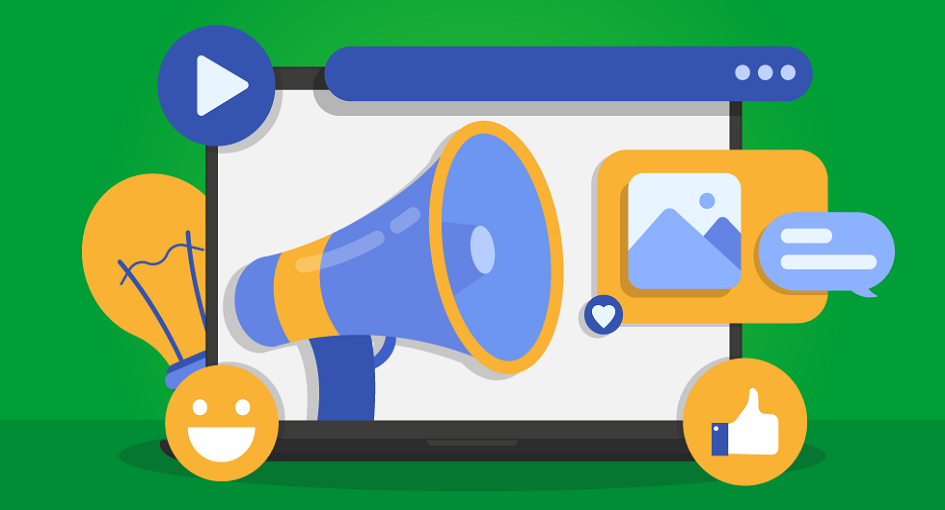
In the ever-evolving landscape of social media, content is king. Engaging, creative, and diverse content is essential to captivate your audience and drive meaningful interactions. To excel in social media marketing, it’s crucial to understand the various types of content at your disposal and how to use them effectively. This comprehensive guide explores the types of social media content and provides real-world examples to inspire your content strategy.
Text-based posts are the foundation of social media content. They include status updates, tweets, and captions that convey messages through written content. These posts can be used to share information, ask questions, or express opinions.
Example: A fitness brand could post a motivational quote like, “Believe in yourself, and you’re halfway there. 💪 #MondayMotivation.”
Images are a powerful way to convey messages and evoke emotions. They can include photographs, illustrations, infographics, and memes. Visual content tends to capture attention quickly and is highly shareable.
Example: A food blog might share a high-resolution image of a deliciously plated dish, along with the recipe in the caption.
Videos are one of the most engaging types of social media content. They can range from short, snappy clips to longer, in-depth presentations. Video content is excellent for storytelling, demonstrations, and showcasing products or services.
Example: An electronics retailer might create a video showcasing the features of a new smartphone, including demonstrations of its camera capabilities.
Live streaming allows you to connect with your audience in real time. It’s perfect for hosting Q&A sessions, behind-the-scenes glimpses, product launches, or live events. Live streams create a sense of immediacy and authenticity.
Example: A fashion brand could livestream a fashion show, giving viewers an exclusive look at the latest trends.
Stories are short-lived, ephemeral content that disappears after 24 hours. They’re ideal for sharing updates, promotions, and candid moments. Stories are popular on platforms like Instagram, Facebook, and Snapchat.
Example: A travel agency might use stories to showcase snippets of a breathtaking destination, enticing followers to explore further.
UGC involves sharing content created by your audience. It could be customer reviews, testimonials, or photos of people using your products. UGC is a powerful way to build trust and showcase the real-life impact of your offerings.
Example: An outdoor gear retailer might repost a customer’s photo of a successful hiking trip using their products.
Polls and surveys are interactive content that encourages audience participation. They’re great for gathering feedback, conducting market research, and engaging your audience in decision-making.
Example: A software company might run a poll asking users which feature they’d like to see in the next product update.
Educational content provides value by teaching your audience something new. It can include how-to guides, tutorials, tips, and informative articles. Sharing knowledge establishes your brand as an authority in your niche.
Example: A financial advisor could create a series of short videos explaining key investment strategies.
Contests and giveaways are excellent for boosting engagement and growing your audience. They encourage users to participate in exchange for a chance to win prizes. Contests can include photo contests, caption contests, or creative challenges.
Example: An art supply store might run a contest where users submit their artwork for a chance to win a gift card.
Sharing personal stories and behind-the-scenes glimpses humanizes your brand. It allows your audience to connect with the people behind the company and fosters authenticity.
Example: A tech startup could post a behind-the-scenes video showing the team’s brainstorming session for a new product.
Infographics are visual representations of information or data. They’re an effective way to simplify complex concepts and make statistics more digestible.
Example: A health blog might create an infographic illustrating the benefits of a particular diet plan.
Audio content is gaining popularity on social media. Podcast episodes or short audio clips can be shared to engage users who prefer to consume content through their headphones.
Example: A marketing agency could share a snippet from their latest podcast episode discussing digital advertising trends.
Inspirational quotes resonate with audiences looking for motivation and positivity. They’re widely shared and can align with your brand’s values and messaging.
Example: A personal development coach might post a quote about resilience and perseverance.
Interactive content like quizzes and games can be fun and highly shareable. They’re excellent for audience engagement and can help you learn more about your followers.
Example: A beauty brand could create an interactive quiz to help users find their ideal skincare routine.
In conclusion, an effective social media content strategy incorporates a mix of these content types to keep your audience engaged and entertained. The key is to understand your audience’s preferences, monitor performance metrics, and adapt your strategy accordingly. By creating diverse, high-quality content that resonates with your target audience, you can harness the full potential of social media to achieve your marketing goals and build a loyal online community.